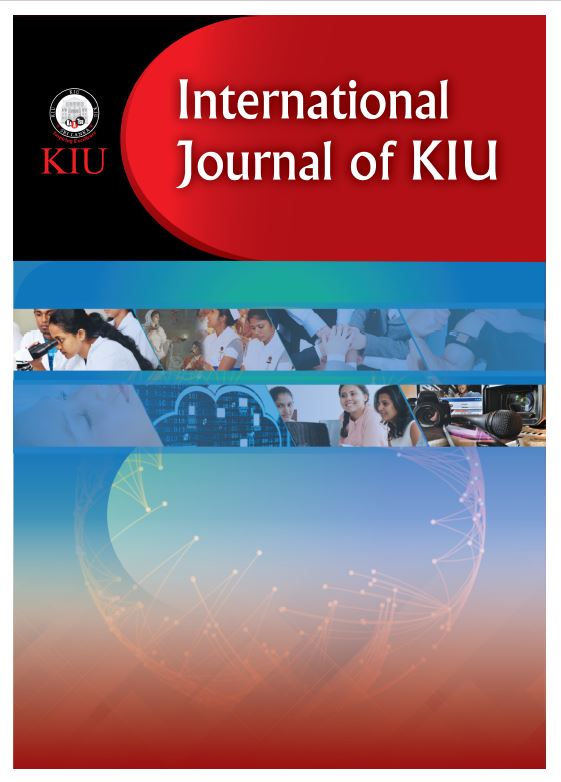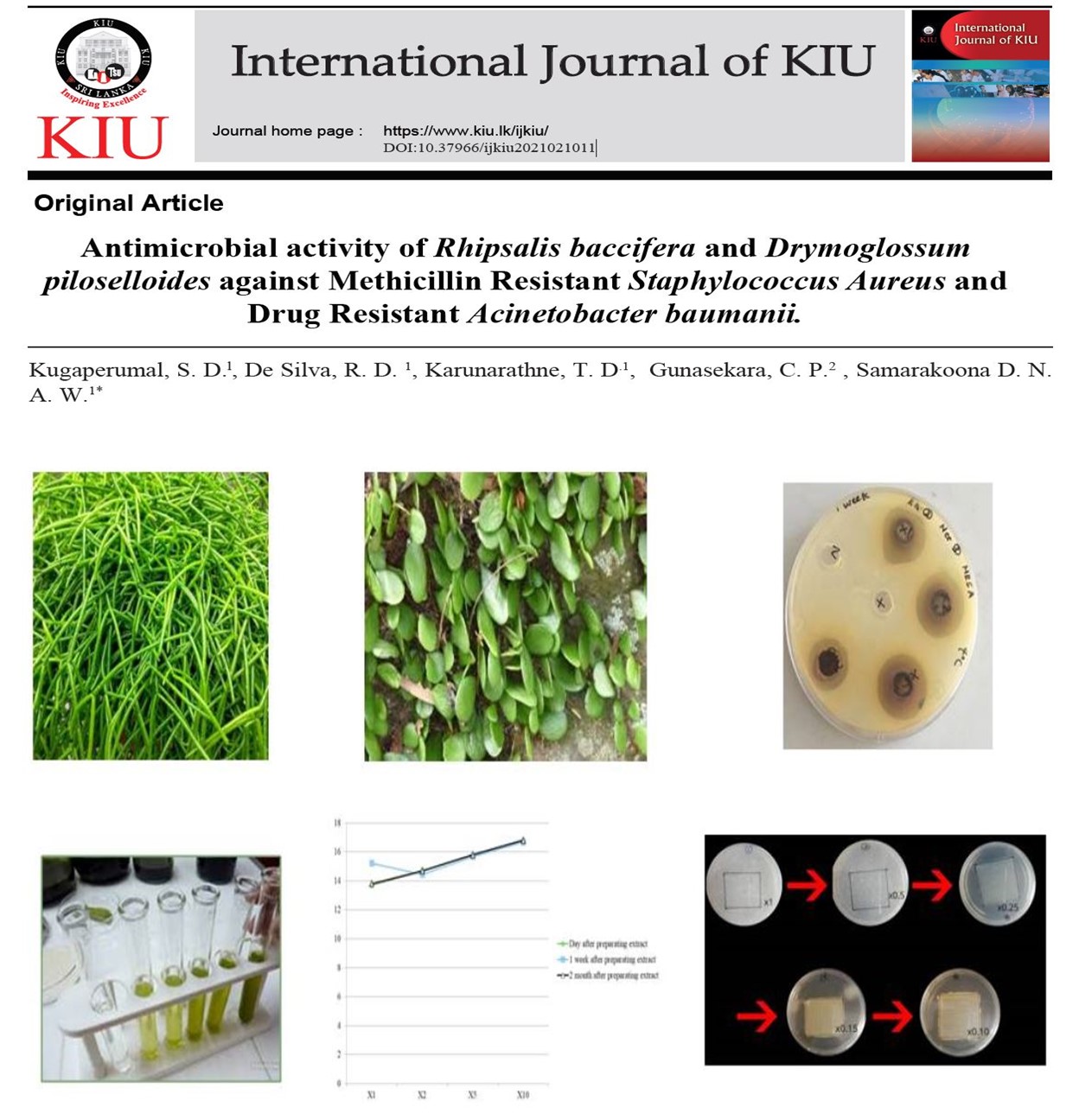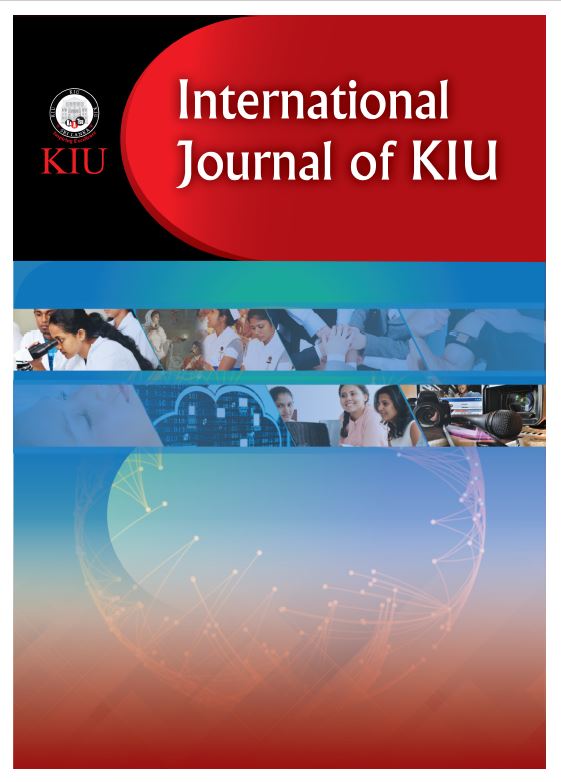Mupirocin Resistance of Staphylococcus aureus in Clinical Isolates of National Hospital and in the Nasal Carriage of Healthy Undergraduates in Colombo, Sri Lanka
Introduction and
Objectives : Mupirocin resistance in Staphylococcus
aureus is increasingly reported in many parts of the world. This study was
conducted with the objective of describing high-level and low-level mupirocin
resistance of S. aureus in clinical isolates and nasal carriage.
Results : From
the 45 nasal carriage isolates, 33 (73%) were Methicillin sensitive Staphylococcus
aureus (MSSA) and 12 (27%) were Methicillin Resistant Staphylococcus
aureus (MRSA). Among the clinical isolates, majority (n=158, 63%) were
MRSA while only 91 (37%) MSSA. An overall mupirocin resistance rate of 4.4%
among S. aureus was observed. Low-level mupirocin resistance was
observed in 3.7% Staphylococcus aureus
Conclusion : This
initial survey of mupirocin resistance among S. aureus in a country with
fairly high usage of mupirocin emphasizes that although the overall mupirocin
resistance is relatively low in this population, regular surveillance of
mupirocin resistance remains a necessity.
Results : From the 45 nasal carriage isolates, 33 (73%) were Methicillin sensitive Staphylococcus aureus (MSSA) and 12 (27%) were Methicillin Resistant Staphylococcus aureus (MRSA). Among the clinical isolates, majority (n=158, 63%) were MRSA while only 91 (37%) MSSA. An overall mupirocin resistance rate of 4.4% among S. aureus was observed. Low-level mupirocin resistance was observed in 3.7% Staphylococcus aureus
Conclusion : This initial survey of mupirocin resistance among S. aureus in a country with fairly high usage of mupirocin emphasizes that although the overall mupirocin resistance is relatively low in this population, regular surveillance of mupirocin resistance remains a necessity.
Keywords
Mupirocin
,
Staphylococcus aureus
,
Nasal carriage
,
MRSA









Related Articles